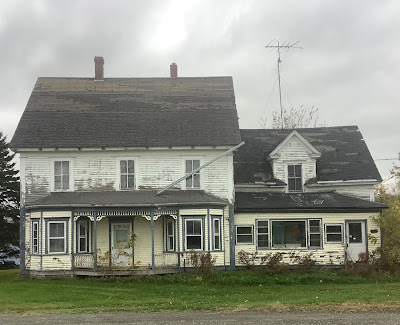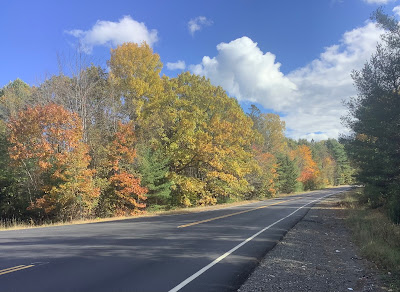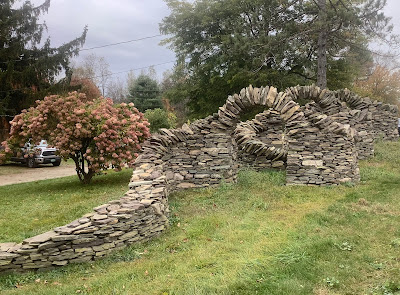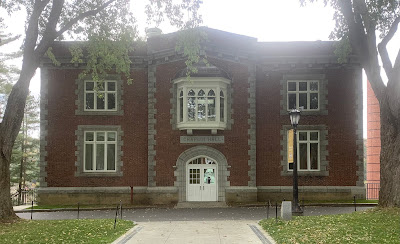Finally, on Day Twenty-six of these travels, I availed myself of a motel. I held off as long as I could until I was beset by the twin demons of a temperature in the low forties and rain. The rain came right on schedule a little after noon and was forecast to continue into the night. I reached the motel I was targeting forty miles down the road just as the rain was commencing. It was barely a drizzle, not enough to normally derail me, but I wasn’t about to mistrust the prediction of how long it would last, as forecasters don’t much get it wrong these days.
The day had started out with a patchy blue sky and no ominous clouds on the horizon, so I thought maybe the rain had diverted, but knowing the accuracy of the forecast, that was mere wishful thinking, though I did want to have an afternoon off to tend to a host of chores I’d been neglecting for days, including laying all my gear out and letting it thoroughly dry.
The day had started out with a patchy blue sky and no ominous clouds on the horizon, so I thought maybe the rain had diverted, but knowing the accuracy of the forecast, that was mere wishful thinking, though I did want to have an afternoon off to tend to a host of chores I’d been neglecting for days, including laying all my gear out and letting it thoroughly dry.
I had a bunch of wash to do and tended to that first so it would have a chance to dry. It will feel especially nice to put on clean tights in the morning. I was hoping dumping out my panniers would reveal some food I had forgotten about. I still had two emergency energy bars I had started with, but no more. It was hard to tell whether my various items were a bit damp or just cold.
In the parking lot of the sprawling motel was a mini-U-Haul truck. I had seen many of them on Cape Breton, going in both directions. Evidently there is a high turnover of labor in Sydney. Someone asked me when I was headed in that direction if I was planning on spending the winter there, assuming I was another job-seeker drawn by an abundance of jobs.
I found a secondary road with virtually no traffic for fifty miles on my return from Sydney between the two main highways mostly along Grand Lake. I could truly soak in the pristine scenery. At the tip of the lake past the town of Grand Narrows I had the option of taking a ferry across Little Narrows or continuing along another lake. Taking the ferry would lead me to a town with a Tony Hortons, my only opportunity for Wi-Fi for the day, but there was so little traffic I wasn’t sure the ferry would be operating or how often. The decision was made for me when I came to the intersection where I had to make my choice, as a ragged sign reported the ferry was operating five kilometers up the road.

I had further confirmation when a couple of cars passed me. The narrows were so narrow the ferry zipped back and forth whenever a vehicle showed up. I had no wait, arriving just after two cars had boarded, and in a couple of minutes I was across and back riding.
Another complaint was the price of heating oil for homes. The Maritime provinces had waived the considerable tax Trudeau had imposed on it in response to climate change and representatives of other provinces wanted the same benefit. One representative was reprimanded by calling Trudeau by name. Evidently there is a rule that one can make personal attacks. One can refer to others only by the title of their office. There wasn’t a single mention of Israel or Gaza or Palestinians. Among the dozens of channels at my disposal was one from Boston that was broadcasting Monday Night Football.























































